“Reason this person is a Gold Ribbon Hero: He was diagnosed at a year and half of age with A.L.L. with a 50/50 chance now 8 yrs old he is now cancer free he kicked cancers but he is my hero I am proud to be his mommy” – Martha C.
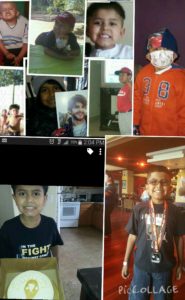
“Reason this person is a Gold Ribbon Hero: He was diagnosed at a year and half of age with A.L.L. with a 50/50 chance now 8 yrs old he is now cancer free he kicked cancers but he is my hero I am proud to be his mommy” – Martha C.

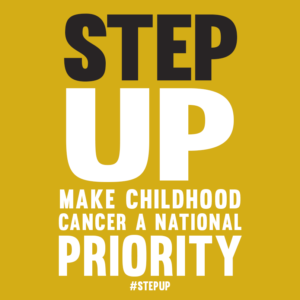 September is Childhood Cancer Awareness Month: time for all of us to #StepUp and make childhood cancer a national health priority. Making childhood cancer a priority means devoting critical resources towards much-needed research efforts and clinical trials devoted to the development of new, more effective, and less toxic treatments. It means making sure childhood cancer receives an equal share of the budgetary pie. It means ensuring the continuation of critical federal funding focused on defeating this terrible disease forever.
September is Childhood Cancer Awareness Month: time for all of us to #StepUp and make childhood cancer a national health priority. Making childhood cancer a priority means devoting critical resources towards much-needed research efforts and clinical trials devoted to the development of new, more effective, and less toxic treatments. It means making sure childhood cancer receives an equal share of the budgetary pie. It means ensuring the continuation of critical federal funding focused on defeating this terrible disease forever.
This is not a call for donations. This is a call to add your voice to the growing chorus of people demanding that the US Government commit to funding critical research efforts specifically targeting childhood cancer.
This month, Congress will review a major piece of legislation designed to protect and enhance federal funding for research into targeted therapies specifically designed for childhood cancer. We hope that you will join with the ACCO to encourage Congress to pass the Childhood Cancer STAR Act. As always, the budget is tight and money is scarce, and Congress has many funding priorities to consider. So we need to work together to let Congress know that childhood cancer cannot be forgotten, that the children facing cancer today and those who will face it tomorrow are counting on Congress—and on us—to make their future brighter.
The Childhood Cancer Survivorship, Treatment, Access, and Research (STAR) Act is an important first step in addressing the critical funding gap undermining the potential for advances in treatment protocols for all forms of childhood cancer. This critical legislation seeks to promote research for childhood cancer in five substantive ways:
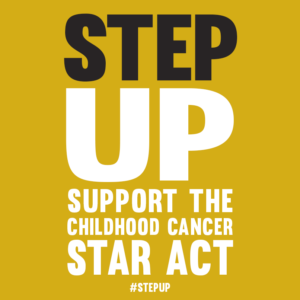 1 out of every 285 children will be diagnosed with childhood cancer every year, and nearly 90% of those children will receive treatment through clinical trials supported by NCI’s Children’s Oncology Group. Because every type of childhood cancer requires a unique treatment approach, development of new, effective, and less toxic treatment protocols has lagged significantly behind similar efforts into adult cancers. In fact, of the 109 new cancer drugs developed since 1990, only two were developed and approved by the FDA to specifically treat childhood cancer.
1 out of every 285 children will be diagnosed with childhood cancer every year, and nearly 90% of those children will receive treatment through clinical trials supported by NCI’s Children’s Oncology Group. Because every type of childhood cancer requires a unique treatment approach, development of new, effective, and less toxic treatment protocols has lagged significantly behind similar efforts into adult cancers. In fact, of the 109 new cancer drugs developed since 1990, only two were developed and approved by the FDA to specifically treat childhood cancer.
The NCI funds nearly all current and ongoing research into new treatments for childhood cancer, and its success has been remarkable: in the past decade, the survivorship rate for some forms of cancer has risen to above 80%. Unfortunately, recent funding cuts have impaired the NCI’s, and specifically the Children’s Oncology Group’s, ability to promote critical research efforts and support desperately-needed clinical trials. These cuts threaten to halt the promising gains that have been made in many areas thus far.
Only by securing much-needed financial support for the NCI and keeping childhood cancer at the forefront of the NCI’s agenda can we preserve the gains that have already been made in the fight against childhood cancer, and continue to push toward a future where no child has to die from this devastating illness or suffer long-term health effects stemming from current treatment protocols.
This month, the ACCO, along with many other groups and individuals in the childhood cancer community, is “Stepping Up” its efforts to make Congress and the general public aware of the grave threat childhood cancer poses to children today and the critical need for ongoing research into new and better treatments. It is our goal, this month, to Make Childhood Cancer a National Priority.
For more information on how to join our social media campaign, letter templates for contacting your representative, and specific posts, tweets, and images you can use to capture the attention of your local representative and the community near you, we encourage you to visit www.stepupforchildhoodcancer.com today! We thank you for helping us #MakeChildhoodCancerANationalPriority!
For more information about the American Childhood Cancer Organization and how we can help, call 855.858.2226 or visit:
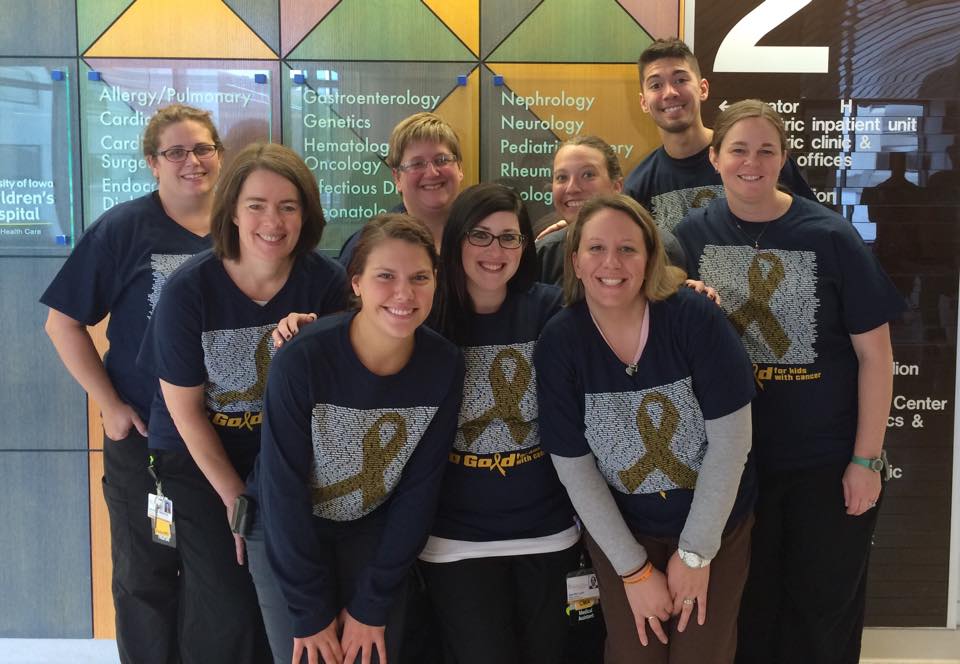 We are overjoyed at the overwhelming success of this year’s Go Gold for Kids with Cancer® awareness t-shirt campaign! We simply cannot think of a better way to showcase the critical importance of September as Childhood Cancer Awareness Month than by celebrating the children who have been touched by this difficult, traumatic, and all-too-often deadly disease. We would like to express our heartfelt appreciation to everyone who participated in the campaign this year: from those who shared their child’s name and story with us, to those who purchased t-shirts and are wearing them proudly, and to those who shared your beautiful pictures with us. And a special thank you to Booster, who worked closely with the ACCO to design, produce, and ship these amazing t-shirts. We thank you ALL for making this year’s Go Gold for Kids with Cancer® T-Shirt campaign our most successful Awareness Event yet!
We are overjoyed at the overwhelming success of this year’s Go Gold for Kids with Cancer® awareness t-shirt campaign! We simply cannot think of a better way to showcase the critical importance of September as Childhood Cancer Awareness Month than by celebrating the children who have been touched by this difficult, traumatic, and all-too-often deadly disease. We would like to express our heartfelt appreciation to everyone who participated in the campaign this year: from those who shared their child’s name and story with us, to those who purchased t-shirts and are wearing them proudly, and to those who shared your beautiful pictures with us. And a special thank you to Booster, who worked closely with the ACCO to design, produce, and ship these amazing t-shirts. We thank you ALL for making this year’s Go Gold for Kids with Cancer® T-Shirt campaign our most successful Awareness Event yet!
The 2015 t-shirt featured an incredible 3,454 names of children who have suffered from some form of childhood cancer. The names of these children cannot, indeed must not ever be forgotten, whether they are undergoing treatment now, are a survivor, or sadly left us far too soon. Childhood cancer continues to touch the lives of too many children, and today’s outdated and highly toxic treatment protocols are proving inadequate to the task of safely and permanently eradicating the threat this disease poses to our children.
Demand for this years’ t-shirt was so high that we extended the purchase deadline by one week to September 8, to ensure that everyone who wanted a t-shirt was able to get one and still receive it this month! With the second campaign ending last night, a total of 8,132 t-shirts have been ordered this year. We are so pleased, so excited at the thought of so many t-shirts and so many names being proudly displayed around the nation in recognition of Childhood Cancer Awareness Month, and we are gratified that so many of you took the time to share with us your pictures of the shirts being worn proudly. Your active participation in this campaign helps us spread the word about the prevalence and severity of this disease, as well as the critical need for advanced research into new and better treatment protocols that fight the disease without the harmful late effects suffered by so many childhood cancer survivors.
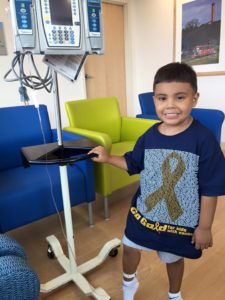 Vital role in enabling the ACCO’s mission
Vital role in enabling the ACCO’s missionOur annual Go Gold® t-shirt campaign plays a vital role in enabling the ACCO’s mission to spread awareness about childhood cancer and the many children it affects every year. For too many years, childhood cancer was a silent killer, overshadowed by the overwhelming attention paid to adult cancers, but increasing awareness about this disease makes it easier to improve our advocacy campaigns at the highest levels in support of new research efforts into more effective and less toxic treatment protocols.
The Go Gold® t-shirt campaign also enables the ACCO to continue to offer high-quality, free resources to children and families currently facing a cancer diagnosis or dealing with late effects of a cancer treatment. These resources are designed to offer real, tangible, daily support and relief to children facing childhood cancer, as well as provide parents with the critical knowledge they need to navigate the difficult world of childhood cancer and make well-informed decisions about their child’s treatment and care. These resources play a vital role in empowering the lives of these amazing cancer warriors and their families, and your participation in this campaign helps make it possible to distribute these resources to all who need them, free of charge!
This year’s campaign is over, but we are already planning our next t-shirt campaigns and hope you will be just as eager to participate next year as you were this year!
The American Childhood Cancer Organization is dedicated to offering assistance, support, and guidance to children facing childhood cancer and their families. Founded and led by parents of children with cancer and survivors—the ACCO is guided by a deep, personal commitment to doing everything we can to make the lives of the children courageously battling this deadly disease easier. To find out how you can help, we encourage you to visit www.acco.org for more information on our critical mission and details on how you can help us eliminate this threat to our children forever.
…Because Kids Can’t Fight Kids Alone!®
For more information about the American Childhood Cancer Organization and how we can help, call 855.858.2226 or visit:
This renowned paediatric oncologist shares his deep insight on the difference between curing and healing. Living, dying and modern medicine.
For more information, please contact:
Dr. Mark Greenberg
Chair, Clinical Oncology Committee & Senior Adviser, Policy & Clinical Affairs, POGO
Phone: 416-592-1232
Fax: 416-592-1285
Email Dr. Mark Greenberg
“Reason this person is a Gold Ribbon Hero: I am nominating my husband, Harris Freed, MD. Dr. Freed is a diagnostic radiologist. He works in a PET/CT center providing diagnostic consultations to a large group of oncologists. He is passionate about his work and speaks to the oncologists on a daily basis indirectly affecting the care of their patients. The reason I am nominating Dr. Freed is that he also makes Sing Along videos for children and grandchildren under the byline: Papa Harris Freed. Recently, my husband found out that one of his childhood friends’ granddaughter was suffering for recurrent leukemia. Papa Freed did a special tribute video Sing Along for Eleanor. It brought so much joy to her. Here is the link so that you can view it:
https://youtu.be/h-rMUx_HF-o
His message is to “Share the Love!” and it comes from the heart. He made a difference for Eleanor and her family. Please feel free to use the video in any email campaign to raise money for your cause. I know that if you wanted him to, he would be happy to make a special video for your organization. Thank you for your consideration. ” – Amy F.
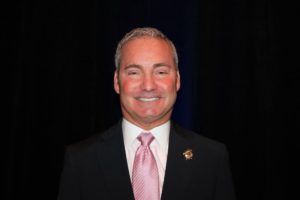
“Reason this person is a Gold Ribbon Hero: Lyla was born a beautiful, healthy little girl. At 15 months, she was diagnosed with stage III neuroblastoma. After grueling treatments and therapies, she underwent a tumor resection in Mayo Clinic. It was especially critical since the tumor was wrapped around major vessels in her spine. Lyla defied the odds and paved the way for ground breaking treatment in Levine Children’s Hospital in Charlotte, NC. Her journey inspired our blog, Hey Little Fighter.” – Carla J.
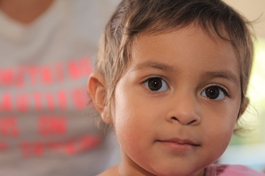
“Reason this person is a Gold Ribbon Hero: My beautiful daughter Destiny is my Gold Ribbon Hero. Just 2 short months(nov 15 2013) after her 13th birthday(sept 12) she was diagnosed with MDS/AML leukemia with monosony 7. With one round of chemo she was cancer free but because of the MDS she needed a bone marrow transplant ASAP. Her sibling wasn’t a match so we moved to the donor list. There was only 1 match and it was a cord blood. On Jan 28,2014 Destiny was admitted to Nationwide Children’s hospital 2 hours from home to start harsh chemo to knock out her bone marrow to receive her new cells. On Feb 7,2014 she had her BMT. After 45 days in isolation the drs had decided her transplant failed. There was no more matches…plan B. Take marrow from me (mom) known as a haplo transplant being only half a match for her. She receive a dose of chemo again to knock out any remaining cells and I started a series of 5 cell boasting shots. On April ,2014 she received her second BMT. She was released from the hospital to the RMDH at the end of April at 98% donor. She had clinic once a week. We celebrated her 100 day milestone July 10th. Her T-cells were alittle low so they decided to do DLI (donor lymphocyte infussion). Every 4 weeks she would get a dose of chemo for 7 days on the 8th day she would receive a boast of cells. She did orientation for her freshman year even tho she was not able to start back to school until after Christmas break. On Sept 8th 2014 Destiny had clinic that morning. She awoke with a rash on her legs, arms, back and belly with a slight fever. So off to clinic and like we figured she would be admitted for GVHD. She was giving steroids to help with the GVHD. She let them know she had to be out by her birthday 4 days away. The morning of Sept 10 her nurse was taking her vitals and her blood pressure was low. The called for the special team. Administered a bouls of fluids and sent her to picu were she was intubated. She had became septic. She was extubated on her birthday and under sadation. Not to wake up until the following Monday…missing her birthday! My husband came to the hospital to give me a break. I went home for 2 days. The morning I was to go back I spoke to my husband and he said everything was fine and he’d see me later on that day. 5 mins later he’s telling me I have to get there they don’t think she would make it till noon!?!? Her heart had started a funky rhythm. I got there as soon as possible and she was intubated again but stable. Her dr wanted to do a bma to see if the leukemia had return but she was not stable enough to be able to go through her back so he did it on her knee. No cancer! Her liver numbers were very very high. At this point the believed she had severe steroid resistant GVHD. To unstable to have a liver biopsy her BMT dr came to us with a study drug that she would receive once a week for 4 weeks if she gave them that long. We started it right away. She was receiving 24 hour dialysis amongst lots of other things. She was still fighting that’s all that mattered! Things were looking better everyday. Her liver and kidney numbers were still outrageously high. Extubated and intubated yet again, they talked about a trach. On oct 14 the nurses were unable to pick up her o2. Her body temp continued to be low. We expected the worst but hoped for the wonderful miracle we had been praying for. Sadly on the morning of the Oct 16,2014 (also her daddy’s birthday) at 8:09 am Destiny sadly passed onto heaven. You can learn more about Destiny at https://m.facebook.com/
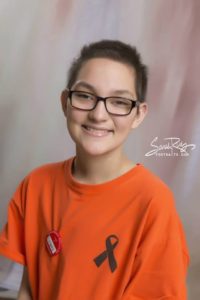
“Reason this person is a Gold Ribbon Hero: 2 years ago my little brother was diagnosed with Acute lymphocytic leukemia. That day I will never forget . I will never forget how our worlds completely turned upside or how my family and I put aside our differences and came together for my sweet baby brother . My beautiful mother who kept our family
Together , was the glue that held us during this extremely difficult time. On November 20th 2013 my beautiful brother lost his battle with cancer. My mom never let us forget how much he loved us. My mom who has been nothing but strong during this time never showed is fear . She still doesn’t . She has her days when she will call me and completely breakdown but she always ends the conversation ” my Noah would be mad if he saw us crying right now” we both would hang up the phone and we would look up to the sky and tell Noah how much we missed him.” – Justina G.
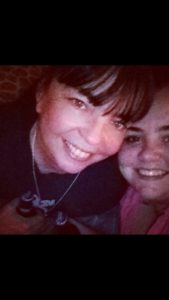
“Reason this person is a Gold Ribbon Hero: Less than two months after Dominik turned two, his mom took him in for a lump she found on his left side. He was diagnosed with Neuroblastoma. Dominik is four months into treatment. He has had two surgeries, just ended five rounds of chemo, and endless trips to Childrens Hospital in Milwaukee, two hours from home in Green Bay. Dominik,his mom, Dad and four year old brother have been living at the Ronald McDonald house, and will be until treatment is finished. Dominik has taught us a huge life’s lesson through out his journey. He never complains about the pain, when he gets sick from the chemo he bounced back to his silly little self. He doesn’t understand any of what has been happening but my grandson is the strongest person I know. He takes each day as it comes not knowing what is going to happen from day to day. Dominik is truly a hero in my eyes and everyone else in his life.” – Tracy S.
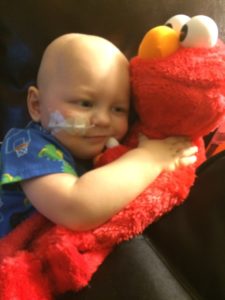
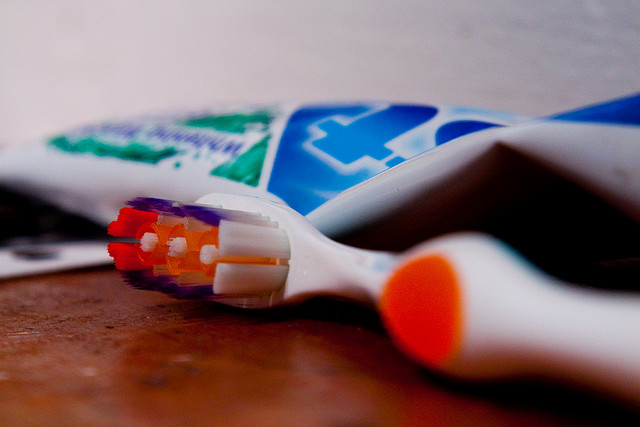 Childhood cancer treatments can affect normal tooth development and cause long-term dental issues. The California Dental Hygienists’ Association is being proactive in highlighting this issue during Childhood Cancer Awareness Month and has asked us to share their Press Release. We encourage families to discuss their child’s treatment related dental issues with their oncologist and child’s dentist.
Childhood cancer treatments can affect normal tooth development and cause long-term dental issues. The California Dental Hygienists’ Association is being proactive in highlighting this issue during Childhood Cancer Awareness Month and has asked us to share their Press Release. We encourage families to discuss their child’s treatment related dental issues with their oncologist and child’s dentist.
“CDHA joins the ACCO in recognizing Children’s Cancer Awareness Month
Importance of Oral Health and Oral Care before, during, and after cancer treatment is stressed.
Sacramento CA, September 1, 2015
All of us know someone who has been affected by cancer. Unfortunately, the sad truth is that our most vulnerable population, our children, can also be the victims of cancer. In the U.S., 15,780 children under the age of 21 are diagnosed each year with cancer, according to the American Childhood Cancer Organization (ACCO).
There are many types of childhood cancers that range from brain cancer to lymphomas and sarcomas. Treating a child with cancer involves a large team of specialists and oncologists. “Because there is a risk of developing side effects which are linked to dental disease, seeing a dentist and/or dental hygienist before cancer treatment begins is imperative”, states California Dental Hygienists’ Association (CDHA) President Lygia Jolley, RDH, BA. Both the disease and the treatment can cause many problems that affect the child’s mouth. Among these are dry mouth (xerostomia), mouth sores (mucositis), tooth decay, difficulty swallowing (dysphagia), difficulty chewing or opening the mouth (trismus), oral infections, bone disease, inflammation or pain in the lining of the mouth and tongue.
According to the American Cancer Society , the types of cancer treatments which have proven to be the most beneficial and effective include chemotherapy, radiation therapy, and the new technique of plasma laser surgery.
Chemotherapy is a cocktail of drugs given intravenously to kill the rapidly growing cancer cells. Plasma Laser surgery uses focused lasers directed at the affected cells to destroy them. And radiation therapy is delivered directly to the tumor to kill the cancerous cells. Unfortunately, all three treatment options do damage or produce side effects that can affect the patient. The acute concerns of cancer treatment relate to the child’s immediate overall health, while the chronic effects can have implications regarding the growth of the child.
“Dental treatment is an extremely important need before beginning cancer treatment”, states Jolley. “It identifies existing risk factors, oral treatment needs, existing risk factors, and oral hygiene care recommendations”, continues Jolley. An appropriate amount of time needs to be considered for oral care before starting cancer treatment. To start, the child needs to visit a dentist and hygienist for evaluations, ideally one month before cancer treatment begins to allow enough time for the tissue to heal following any dental treatment needs. During this phase, the dentist should take a panoramic and full mouth x-rays to look for any abnormalities such as periodontal disease, ongoing infections, or cavities. Additionally, the dentist or hygienist will conduct an oral cancer screening to check for signs cancer may be present in the mouth. Orthodontic braces also need to be removed, and extraction of any loose and hopeless teeth should also be accomplished at this time.
Cancer treatment related dental education for the child and parents is key for good oral health during the child’s treatment. Overall, good brushing and flossing is imperative. The child’s immune system is compromised during treatment, so extra attention to daily cleanings to keep the mouth clean goes a long way. At the first sign of any oral complications related to cancer treatment, the child should be immediately seen by a dentist or hygienist. Be sure to alert your dental provider to the types cancer treatment the child is undergoing. Often times, blood work is needed 24 hours prior to care so that the clotting factors and immune system mediators are measured. Additionally, antibiotics may be needed to prevent infections following dental hygiene care. The CDHA suggests the following care tips:
Gently brush your teeth two times a day, and floss regularly. It is important to continue good oral hygiene practices. If the gums are sore, it may also help to soak an extra-soft toothbrush in warm water to soften the bristles before brushing. Prescription rinses are available to relieve oral pain associated with chemo and radiation therapy.
Avoid alcohol based mouth rinses and extremes in your diet. Do not rinse with an alcohol based mouthrinse – choose an alcohol free mouth rinse instead. Food choices should include foods that are soft and mild. Extremely hot, cold, spicy, acidic, or crunchy foods may irritate your mouth and cause damage.
Promote good bone health. Getting enough vitamin D and calcium each day helps promote a strong, healthy jaw and teeth. Dairy products are good sources of calcium and, if fortified, vitamin D. Other food choices may include fortified fruit juice and fortified breakfast cereals. Talk with your doctor before taking any supplements.
Drinking water and sugarless drinks may help manage dry mouth. Sucking on ice chips or using candy sweetened only with Xylitol is a good alternative. Try to avoid things that will dry out your mouth and cause cavities, such as sodas and fruit juice. Topical oral gels or rinses can be prescribed for dry mouth either caused by chemotherapy or radiation therapy to the head and neck.
In some cases, the child cannot go to a dentist for checkups and dental hygiene care, in this case, and RDHAP (Registered Dental Hygienist in Alternative Practice) can be the best option. RDHAPs are licensed hygienists who can work in hospitals, home care facilities, and can travel to the sick patient’s home to provide dental hygiene care. RDHAPs don’t need DDS presence to provide dental hygiene care and they are able to do oral screening, place sealants, and clean patient’s teeth without having patient to leave the bed or his/her comfort place. To find an RDHAP, visit www.cdha.org/rdhap.
Follow up treatment is another part of dental care for those who suffer from cancer. Patient must explain all the medication that he/she was given during cancer treatment including bisphosphonate therapies and stem cell transplant; the patient needs to share the type of cancer, duration of treatment, methods of treatment, any complications before, after and during cancer treatment, and any surgeries that was done. If patient went under head and neck radiation therapy, a 4-8 weeks dental appointment is needed for the first 6 months since oral complications after radiation therapy can happen long after the termination of the treatment.7
It is important to receive ongoing dental examinations as after effects of cancer treatment can be far reaching. Relay to your dental provider all medication that was given during cancer treatment including bisphosphonate therapies and stem cell transplant. Duration of treatment, methods of treatment, any complications before, after and during cancer treatment, and any surgeries need to be shared . If head and neck radiation therapy was administered, a 4-8 weeks dental appointment is needed for the first 6 months following treatment as oral complications can happen long after the termination of the treatment.
Children who have been under chemotherapy before their permanent teeth were fully formed, especially if they were younger than 5 years old at the time of treatment, are at greater risk of future dental problems. In addition, radiation therapy near or in the mouth, will affect the salivary glands and cause permanent loss of salivary function, leading to a life long increased risk for dental decay and periodontal disease. Radiation therapy can also cause unintended nerve damage creating taste alteration which can lead to disruptions in diet.
Chemotherapy affects bone density by decreasing the level of calcium in the body. As a result, the growing child can develop TMJ problems, locking of the jaw, asymmetrical growth of face and jaw bone, abnormally sized/shaped teeth, or severe orthodontic complications.
The CDHA recommends visiting its website for more information: www.cdha.org
The California Dental Hygienists’ Association (CDHA) is the authoritative voice of the state’s dental hygiene profession. The organization was established 30 years ago when two regional associations merged to form a unified professional group. CDHA represents thousands of dental hygienists.”
For more information about the American Childhood Cancer Organization and how we can help, call 855.858.2226 or visit:
Want To Read American Childhood Cancer Organization On Your Phone? Click the NoteStream logo: 